The Real Cost of Buying & Owning a 50-Foot Yacht
A 50-foot yacht can be difficult to maneuver, especially in tight spaces and harsh weather, so you need to invest in proper training for yourself and your crew. You may also need to apply for special permits and licenses to operate in certain areas. These factors can add up quickly to the overall costs, so if you are determined to own a 50-foot yacht, here's the real cost of buying and owning one.
The total estimated upfront costs of buying a 50-foot yacht range from $458,000 to $692,000 and include the initial purchase price and other fees. There are also hidden costs that total $70,000–$300,000+ per year. For ongoing costs, the total estimated annual costs are $35,000–$85,000 per year.
Although costly, with proper budgeting, maintenance, and strategic planning, you can manage the costs of owning a yacht and still enjoy the lifestyle that comes with it. Let's look at some practical tips to help you manage the costs of owning a 50-foot yacht.
Summary
- A high-end luxury yacht may cost significantly more than a basic production yacht with standard features and finishes.
- A new yacht with low engine hours and minimal wear and tear may command a higher price than an older yacht.
- Hiring a surveyor can help you save money in the long run by identifying any potential problems before you purchase the yacht.
- Fuel costs can add up quickly, since a 50-foot yacht with twin diesel engines uses almost 20–30 gallons of fuel per hour.
- Winter storage can protect your yacht from the elements, and it can also add up to the overall cost of owning a yacht.
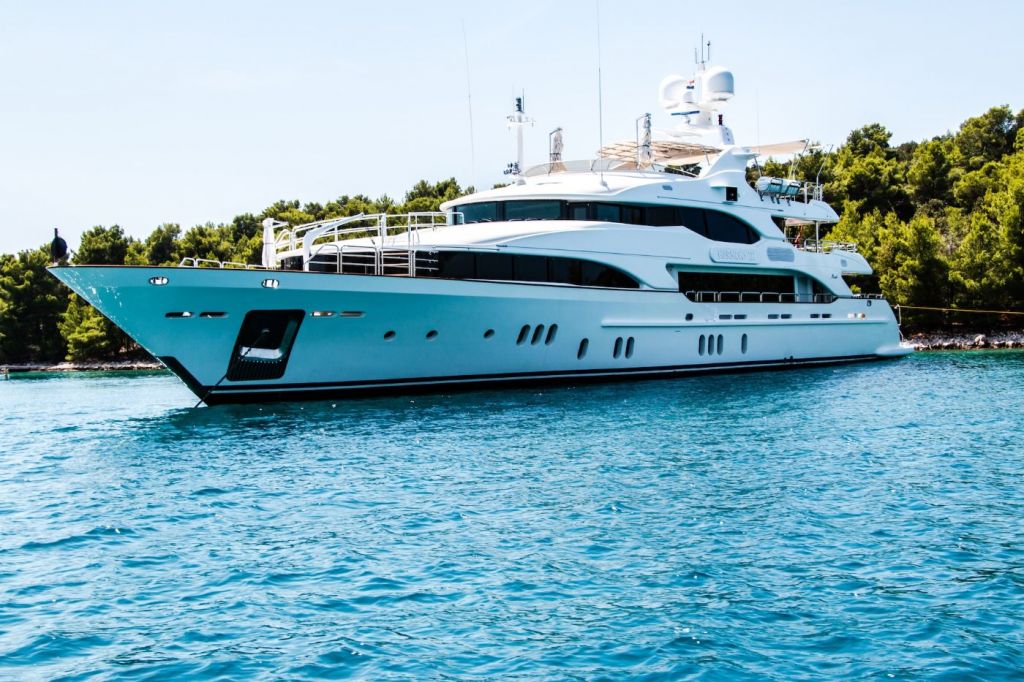
On this page:
Cost of Buying & Owning a 50-Foot Yacht
When buying a 50-foot yacht, there are several costs to consider, such as upfront costs, hidden costs, and ongoing costs per year. Here's a rundown on the all-in cost:
| Costs of Buying and Owning a 50-foot yacht | Estimated Cost Range |
|---|---|
| Total estimated upfront costs | $458,000 - $692,000 |
| Total estimated hidden costs | $70,000 - $300,000+ per year |
| Total estimated ongoing costs | $35,000 - $85,000 per year |
Upfront Costs of Buying a 50-Foot Yacht
In this section, we will break down these costs into sub-sections to give you a better idea of what you can expect.
| Upfront Costs | Estimated Cost Range |
|---|---|
| Purchase price | $400,000 - $600,000 |
| Sales tax and registration fees | $40,000 - $60,000 |
| Survey and inspection costs | $3,000 - $7,000 |
| Insurance and financing costs | $15,000 - $25,000 |
| Total estimated upfront costs | $458,000 - $692,000 |
The purchase price of a 50-foot yacht varies depending on the model
Different models of yachts may have different features, amenities, and capabilities, which can affect their value and appeal to buyers. A high-end luxury yacht with state-of-the-art technology, custom finishes, and top-of-the-line appliances may cost significantly more than a basic production yacht with standard features and finishes.
Similarly, a newer yacht with low engine hours and minimal wear and tear may command a higher price than an older yacht with more use and maintenance requirements. Yachts located in popular boating destinations or areas with high demand may be priced higher than those in less desirable locations.
Here are some examples of different yacht models, their amenities, and estimated prices:
| Yacht Model | Amenities | Price Range |
|---|---|---|
| Jeanneau Sun Odyssey 490 | Spacious cockpit, large swim platform, modern interior, air conditioning, generator | $500,000 - $700,000 |
| Beneteau Oceanis 51.1 | Comfortable saloon, large galley, spacious cabins, teak decks, bow thruster | $600,000 - $900,000 |
| Bavaria Cruiser 50 | Dual helms, spacious cockpit, large swim platform, modern interior, air conditioning | $400,000 - $600,000 |
| Hanse 508 | Sleek design, large windows, spacious cabins, modern interior, self-tacking jib | $700,000 - $1,000,000 |
| Lagoon 50 | Spacious flybridge, large cockpit, modern interior, generator, air conditioning | $1,000,000 - $2,000,000 |
Sales tax and registration fees
When you purchase a yacht, you will need to pay sales tax and registration fees. In some states, you may be able to avoid paying sales tax if you purchase the yacht in a different state and keep it there.
In Florida, the sales tax rate is 6%, but there is a cap of $18,000 on the amount of tax you will pay. So if you purchase a yacht for $500,000, you will only pay $18,000 in sales tax.
On the other hand, registration fees are the fees you need to pay to register your yacht with the state where you plan to operate it. The fees are typically used to fund marine programs, such as boating safety education, law enforcement, and conservation efforts.

Some states charge a flat fee, while others charge based on the length of the yacht. In some cases, the registration fees may also be based on the age or value of the yacht. These fees are typically renewed annually, and failure to renew your registration can result in penalties or fines.
Registration fees in Florida for a yacht over 110 feet in length can be as high as $4,000 per year. However, for a yacht under 16 feet in length, the registration fee is only $5 per year.
Survey and inspection costs
A survey and inspection is essentially a thorough examination of the yacht by a professional surveyor. The surveyor will inspect the vessel from top to bottom, looking for any issues or potential problems that could affect the yacht's seaworthiness or value. This includes checking the hull, deck, rigging, electrical systems, plumbing, and more.
For smaller yachts, the cost may be a few hundred dollars, while larger and more complex yachts could cost several thousand dollars.
By identifying any potential problems before you purchase the yacht, you can negotiate with the seller or even decide not to purchase the yacht altogether. In the long run, this can save you money and help ensure that you're making a sound investment.
Insurance and financing costs
Insurance rates can vary widely, but you can expect to pay a premium for coverage. The higher the value of the yacht, the higher the insurance premium will be.
As for financing, the interest rates for yacht loans are typically higher than those for home or car loans. This is because yachts are considered luxury items and are often seen as a higher-risk investment. The interest rate you'll be offered will depend on your credit score, income, and the amount of the loan you're seeking.
Hidden Costs of Owning a 50-Foot Yacht

Aside from the upfront costs, there are also hidden costs beyond the initial purchase price. Here are some hidden costs you should be aware of:
| Hidden Costs | Estimated Cost Range (per year) |
|---|---|
| Environmental and regulatory compliance | $10,000 - $50,000 |
| Crew and staffing costs | $50,000 - $150,000 |
| Upgrades and customizations | $10,000 - $100,000+ |
| Total hidden costs | $70,000 - $300,000+ per year |
Environmental and regulatory compliance
Owning a yacht also comes with environmental and regulatory compliance costs. You may need to pay for permits to dock your yacht in certain areas, or you may need to invest in equipment to comply with environmental regulations. These costs can add up quickly and may not be immediately apparent when you're considering purchasing a yacht.
Crew and staffing costs
If you plan to use your yacht frequently, you'll likely need to hire a crew to help you maintain and operate it. Crew and staffing costs can include salaries, benefits, and insurance, and can be a significant expense over time. Additionally, you may need to pay for crew training and certification, which can add to the overall cost of owning a yacht.
Costs of upgrades and customizations
While a 50-foot yacht may come equipped with many standard features, you may want to add additional amenities or customize the interior to your liking. These upgrades can be expensive and may not be covered by your initial purchase price.
Upgrades and customizations can range from relatively minor changes such as adding a new sound system or upgrading the navigation equipment, to more extensive modifications such as adding a new deck or completely redesigning the interior of the yacht. The cost of these upgrades will be based on the extent of the modifications and the materials and labor involved.
Ongoing Costs of Owning a 50-Foot Yacht
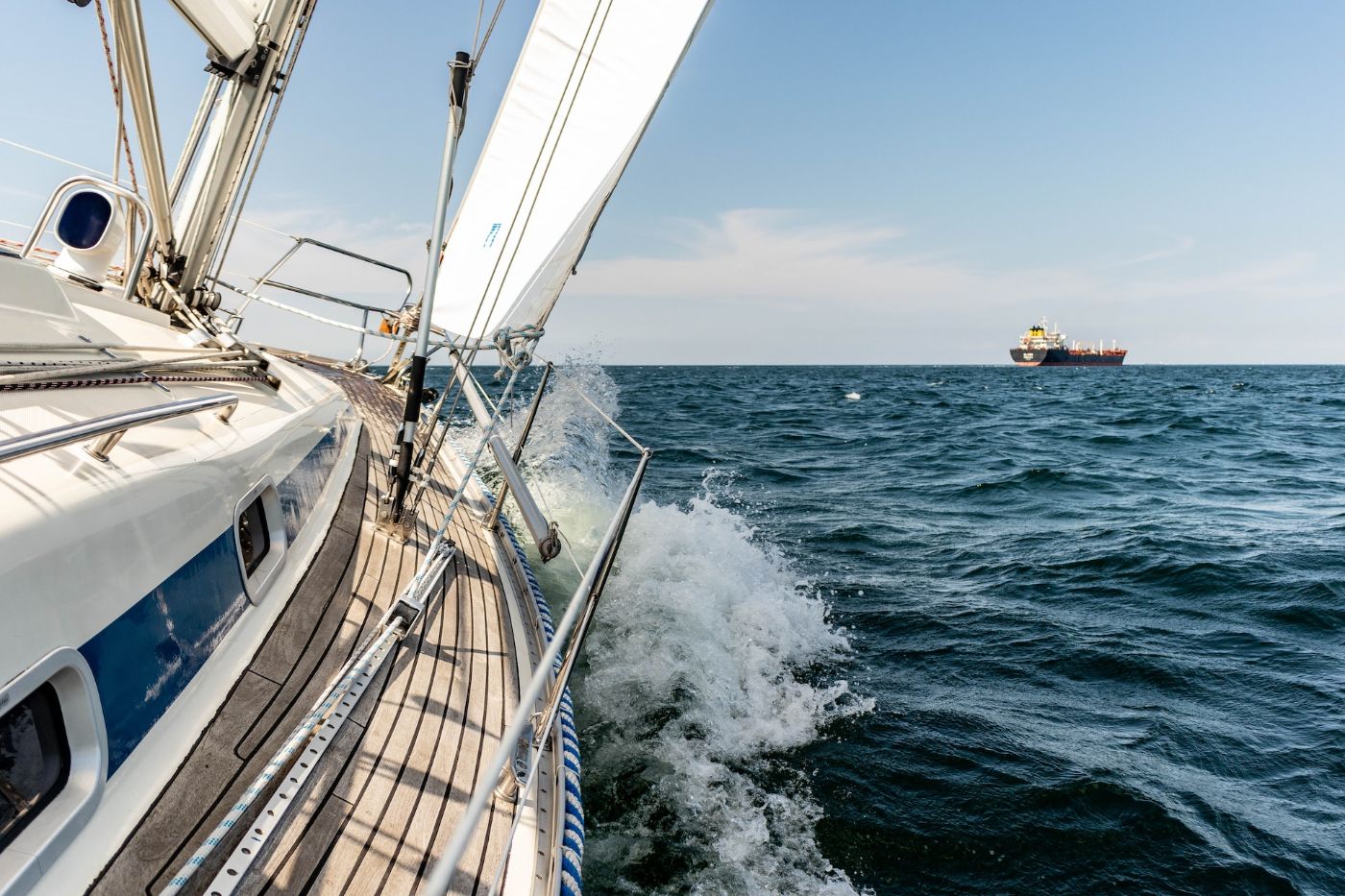
In this section, we will discuss the ongoing costs of owning a 50-foot yacht.
| Ongoing Costs | Estimated Annual Cost |
|---|---|
| Maintenance and repair | $10,000 - $30,000 |
| Docking and storage | $5,000 - $15,000 |
| Fuel and operating | $10,000 - $20,000 |
| Insurance | $5,000 - $10,000 |
| Maintenance reserves | $5,000 - $10,000 |
| Total ongoing costs | $35,000 - $85,000 per year |
Maintenance and repair costs
Regular maintenance helps keep your yacht in good condition and prevents costly repairs. Some common maintenance and repair costs include:
- Engine maintenance
- Hull cleaning and painting
- Electrical and plumbing repairs
- Sail and rigging repairs: (Here's an article on the cost of replacing a standing rigging)
- Interior and exterior cleaning
Docking and storage fees
Some common docking and storage fees include:
- Monthly slip rental fees: These fees cover the cost of renting a slip at a marina or dock for your yacht to be moored. Slip rental fees can range from a few hundred to several thousand dollars per month.
- Winter storage fees: During the off-season, many yacht owners choose to store their vessels on land to protect them from the elements. The cost of winter storage can range from a few hundred to several thousand dollars per season.
- Launch and haul-out fees: These fees cover the cost of launching your yacht into the water and hauling it out for maintenance or storage, and vary based on the location and the size of your yacht.
- Electricity and water fees: Many marinas charge additional fees for the use of electricity and water while your yacht is in the slip.
Fuel and operating costs
A 50-foot yacht typically has twin engines, which can be either gasoline or diesel. Diesel engines are generally more fuel-efficient and have a longer lifespan than gasoline engines, but they are also more expensive to purchase and maintain.
On average, a 50-foot yacht with twin diesel engines will use about 20-30 gallons of fuel per hour, while a gasoline-powered yacht will use about 40-50 gallons per hour.
Routine maintenance such as oil changes, filter replacements, and hull cleaning is part of the overall operating costs and will cost several thousand dollars per year. More significant repairs or upgrades, such as engine overhauls or electronics replacements, can cost tens of thousands of dollars.
Costs for insurance and maintenance reserves
Insurance can protect you from liability and damage to your yacht, while maintenance reserves can help cover unexpected repairs. Some common insurance and maintenance reserve costs include:
- Liability insurance
- Hull and machinery insurance
- Personal property insurance
- Emergency repairs and reserves
Tips for Managing the Costs of Owning a 50-Foot Yacht
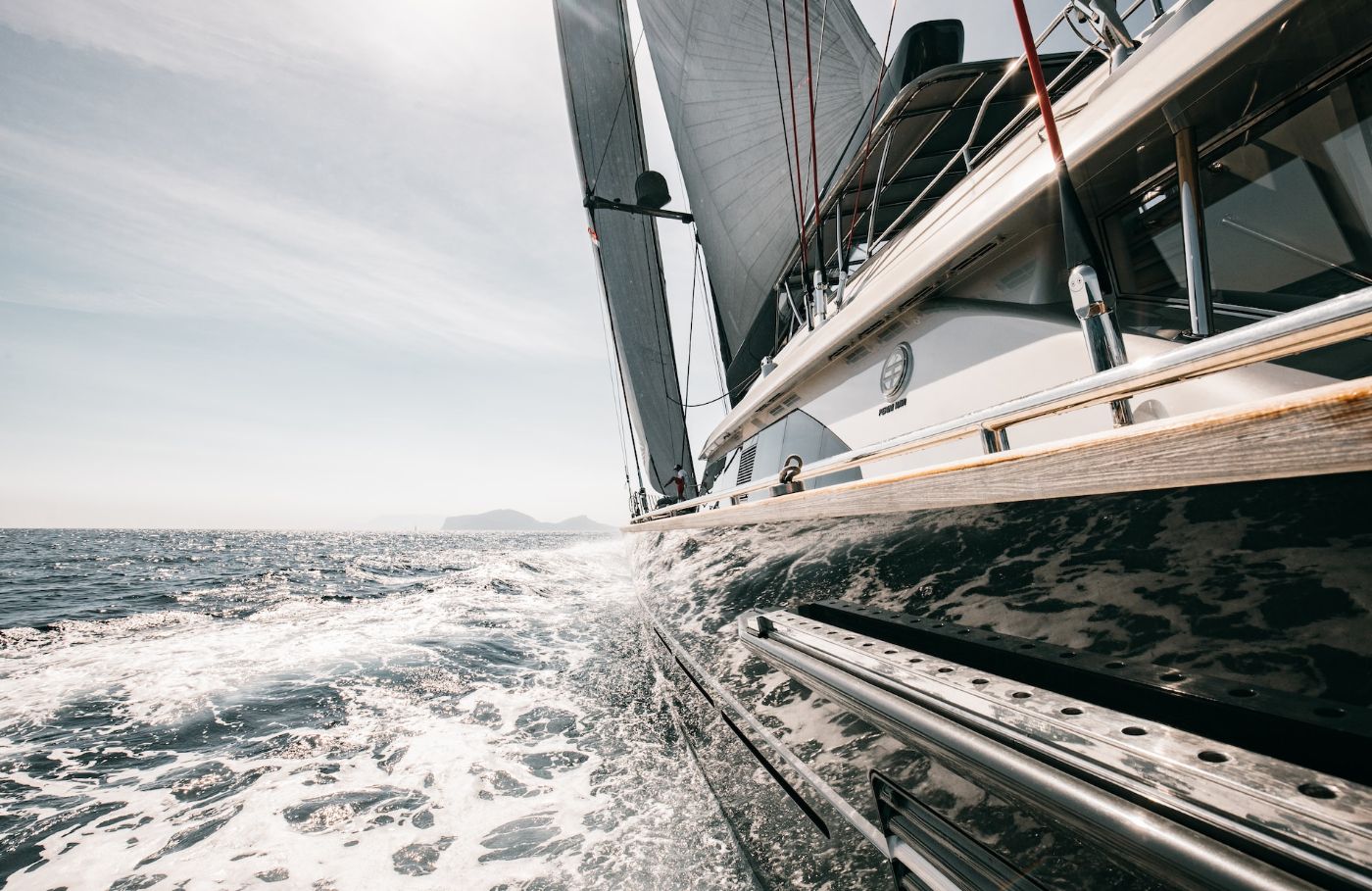
Here are some tips to help you manage the costs of owning a 50-foot yacht:
Create a budget and stick to it
Your budget should include all of the costs associated with owning and maintaining your yacht, including mooring fees, insurance, fuel, maintenance, and repairs. Try to plan for unexpected costs, such as emergency repairs or unexpected upgrades.
You should also plan ahead for seasonal expenses, such as winterizing your yacht when the boating season is over. By creating a budget and planning ahead, you can avoid surprises and ensure that you have the funds necessary to keep your yacht in top condition.
Do the basic maintenance and repairs by yourself
While there are some tasks that require a professional, such as engine repairs or electrical work, there are many things you can do yourself with a little knowledge and the right tools.
By doing your own maintenance and repairs, you can save money on labor costs and ensure that your yacht is always in top condition. You can also take pride in knowing that you are taking care of your investment and keeping it in great shape.
Consider sharing and chartering options
If you don't use your yacht all the time, you may want to consider sharing or chartering options as a way to offset the costs of ownership. Sharing your yacht with friends or family members can help split the costs of maintenance and repairs while chartering your yacht to others can help generate income.
There are many websites and companies that specialize in yacht sharing and chartering where you can find an option that works best for you. Just be sure to carefully vet anyone who will be using your yacht to ensure that they are responsible and will take good care of your investment.
Learn some selling and trading strategies
If you find that the costs of owning a 50-foot yacht are too high or you are ready to move on to something else, you may want to consider selling or trading your yacht. There are many strategies you can use to get the best price for your yacht, including working with a broker, advertising online, or attending boat shows.
If you are interested in trading your yacht for something else, perhaps carefully consider your options and work with a reputable dealer. By using these strategies, you can ensure that you get the best value for your investment and can move on to your next adventure with confidence.
Did you find the answer to your specific question?
👍 2 👎 0


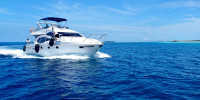
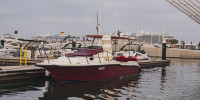
Leave a comment